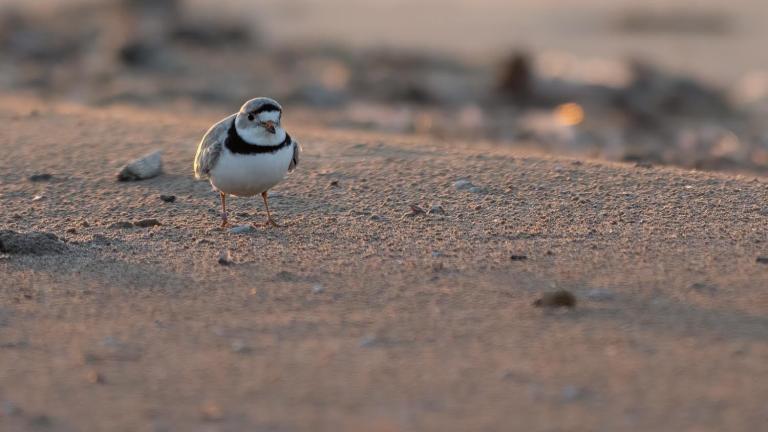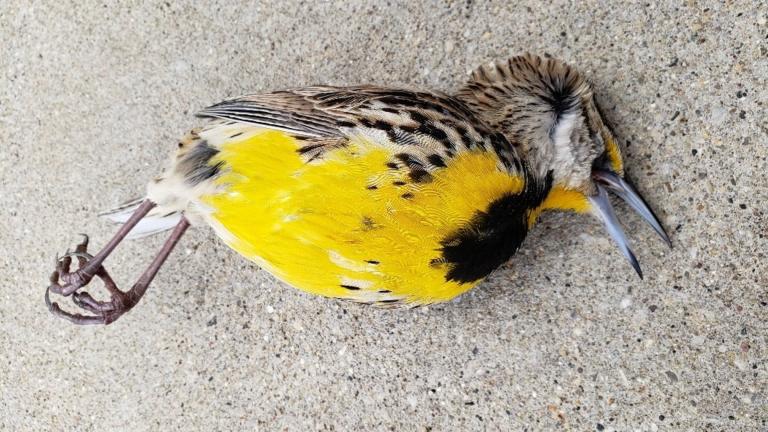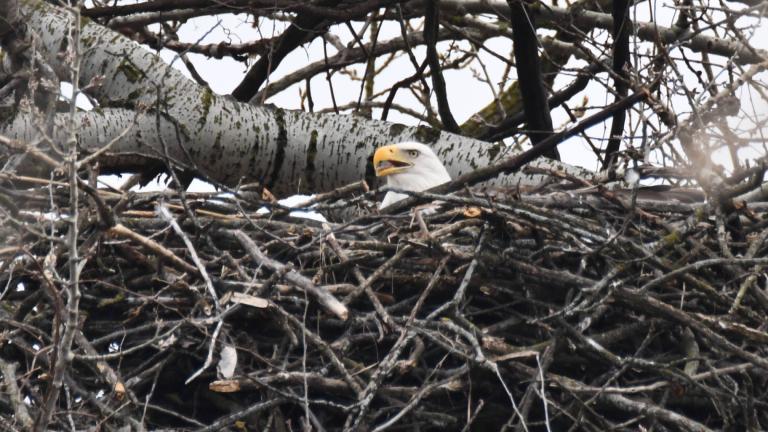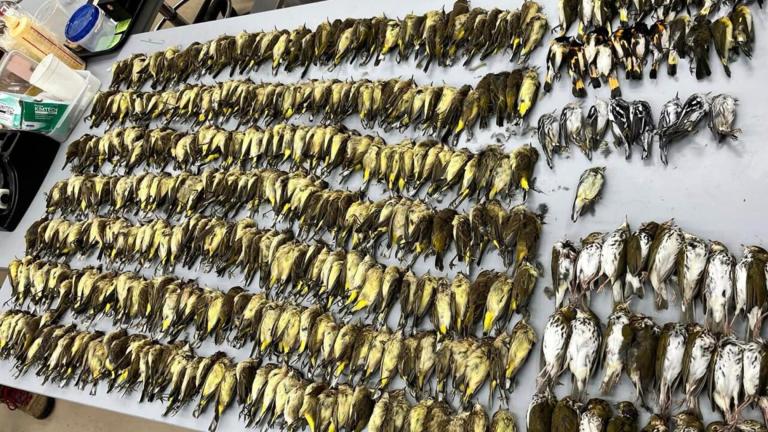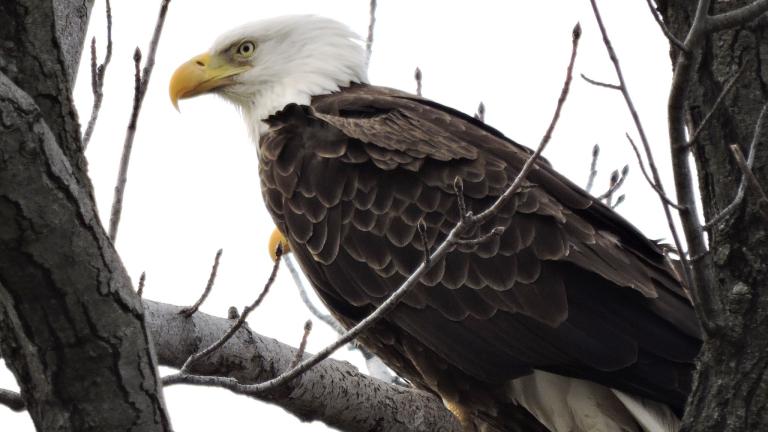 A memorial for Monty and Rose, held in 2022, at the site now named in their honor. (Patty Wetli / WTTW News)
A memorial for Monty and Rose, held in 2022, at the site now named in their honor. (Patty Wetli / WTTW News)
Who knew the members of the Chicago Park District Board of Commissioners were such romantics?
At Wednesday’s board meeting, which coincided with Valentine’s Day, commissioners voted to name a stretch of lakefront in honor of Chicago’s most famous lovebirds.
Monty and Rose, the endangered Great Lakes piping plovers that captured the city’s heart five years ago, are now memorialized with the Monty and Rose Wildlife Habitat.
In 2019, Monty and Rose became the first pair of piping plovers in 71 years to successfully nest and fledge chicks in Chicago and Cook County. The birds’ choice of the Montrose Dune Natural Area, along a bustling section of urban waterfront, as a nesting site thrilled birders and casual observers alike.
The couple beat the odds three years running, rearing multiple broods in the shadow of Chicago’s skyline. Though Monty and Rose both died in 2022, their brief lives had an outsized impact on Chicagoans’ understanding of the threats facing shorebirds in the Great Lakes.
To provide greater support to birds like Monty and Rose, the Park District expanded the Montrose Dune Natural Area by 3.1 acres in 2021. It’s this additional acreage — where the love story of Monty and Rose first took flight — that’s now named for the plovers.
 Artist Don Di Sante carved Monty and Rose into the rock wall at Montrose Beach. (Patty Wetli / WTTW News)
Artist Don Di Sante carved Monty and Rose into the rock wall at Montrose Beach. (Patty Wetli / WTTW News)
The Park District is also crossing its fingers for a love match in Big Marsh Park, in the South Deering community on the city’s Far Southeast Side. As many as six or seven bald eagles at a time have been spotted in Big Marsh in recent weeks, including some engaged in mating displays, officials said.
This time of year, the population of bald eagles in the area is a mix of year-round residents — who might be looking for a nesting site — and those just spending the winter in Illinois, said Stephanie Beilke, senior manager of conservation science at Audubon Great Lakes.
Though it’s been more than a decade since eagles have nested in Chicago’s city limits, Beilke said, “we’re always hoping.”
Seeing so many eagles mingling at Big Marsh without incident suggests there’s no nest nearby — otherwise there likely would be aggressive defense of territory, she noted.
Eagles’ nests are all but impossible to miss, they’re so huge: typically 4 to 6 feet in diameter and 3 feet deep, according to the U.S. Fish and Wildlife Service.
Wildlife officials also noted that nesting bald eagles are quite sensitive to human activity and may abandon a site in a new territory if there’s too much commotion.
Contact Patty Wetli: @pattywetli | (773) 509-5623 | [email protected]

